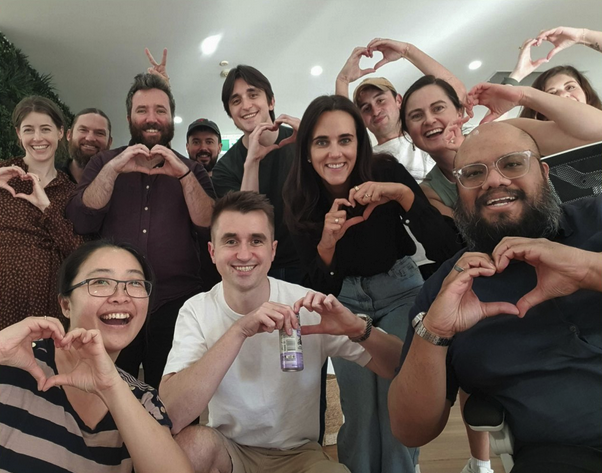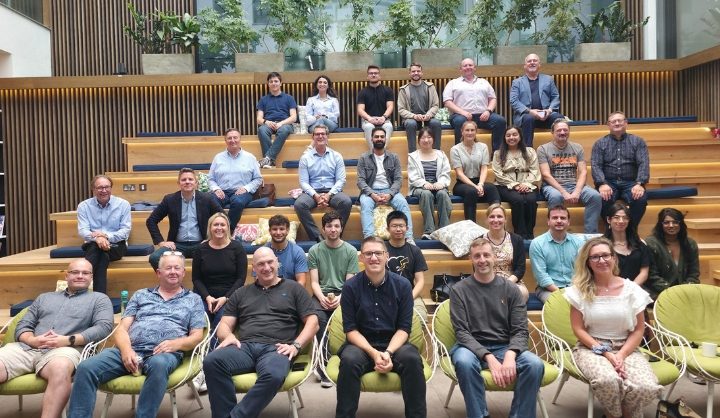When NVIDIA CEO Jensen Huang took the stage at the Walter E. Washington Convention Center, the crowd already knew they weren’t in for an ordinary tech conference. “Washington, D.C., welcome to GTC,” he said with his trademark black leather jacket and grin, “It’s hard not to be sentimental and proud of America.”
The presentation was, in Huang’s words, a “blueprint for America’s AI century.” And over the next two hours, he laid out a vision that touched nearly every frontier of technology: quantum computing, national security, telecommunications, science, and even robot-assisted surgery.
Huang’s opening theme, “Reindustrializing America,” set the tone for the day. The idea? The next wave of U.S. manufacturing and innovation will be powered not just by machines, but by AI-driven “factories of the future.”
These “AI factories,” as Huang calls them, go far beyond data centers. They are digital and physical ecosystems that use robotics, simulation, and accelerated computing to design, test, and manufacture everything from chips to cars, all inside virtual twins before a single wrench is lifted in the real world.
One of the most groundbreaking announcements was NVIDIA NVQLink, a new interconnect technology that directly links quantum processing units (QPUs) with NVIDIA GPUs.
To the non-specialist, that might sound like alphabet soup. But here’s the punchline: NVQLink could help scientists combine the power of quantum physics with classical computing in real time, a feat once thought impossible.
Latency, the delay between sending and receiving data, is often the Achilles’ heel of such systems. But NVQLink reportedly achieves communication speeds as fast as four microseconds.
That’s fast enough to enable U.S. Department of Energy (DOE) labs and 17 quantum startups, already working with NVIDIA, to simulate molecular behavior, chemical reactions, and even cosmic physics more accurately than ever before.
“This is about accelerating the future of science itself,” Huang said.
In partnership with the DOE and Oracle, NVIDIA announced the creation of seven new AI supercomputers, including the Solstice system at Argonne National Laboratory, soon to host 100,000 of NVIDIA’s new Blackwell GPUs.
That makes Solstice the largest agentic AI-powered scientific platform ever built for public research.
A second system, Equinox, will deploy an additional 10,000 GPUs, reaching 2,200 exaflops of AI performance, an unprecedented number that could cut years off major research timelines in energy, climate, and national security.
According to DOE officials, these supercomputers mark “a new era of AI-powered discovery,” capable of analyzing scientific data at scales previously unimaginable.
6G, but make It American
Telecommunications, the quiet backbone of everything digital, also got its moment in the spotlight.
Huang announced NVIDIA ARC, an AI-native 6G wireless stack built in America, on American technology, and designed to reclaim a critical sector long dominated by foreign hardware.
“NVIDIA ARC,” powered by NVIDIA’s Aerial platform, will form the foundation of Nokia’s next-generation base stations, marking a major step toward securing U.S. communications infrastructure.
If AI is the brain of the future, digital twins, detailed virtual replicas of real-world factories, systems, or even cities, are the body.
Through its Omniverse DSX platform, NVIDIA is giving companies a blueprint to design and operate gigawatt-scale AI factories.
Validated at NVIDIA’s AI Factory Research Center in Manassas, Virginia, the platform allows energy grids, manufacturers, and logistics firms to simulate operations collaboratively before breaking ground.
Foxconn, Caterpillar, and Johnson & Johnson are already using Omniverse tools to design everything from robotics plants to surgical systems.
“Speaking of Johnson & Johnson, their MedTech division showcased how physical AI is revolutionizing healthcare.
Using NVIDIA Isaac and Cosmos, J&J is simulating and testing its MONARCH robotic surgery platform entirely in virtual operating rooms.
This “simulation-first” approach not only speeds up medical device testing, it also lets clinicians train in realistic 3D environments before performing live surgeries.
For a field where precision and safety are everything, that’s transformative.
Each year, kidney stones send 2 million Americans to emergency rooms, with many needing repeat procedures. Using NVIDIA’s digital twin simulations, engineers can design tools and workflows that reduce strain on surgeons and improve patient outcomes.
Open models for an open future
Huang emphasized NVIDIA’s commitment to open collaboration, a point that resonated strongly in Washington, where debates about AI transparency are heating up.
Through its Clara, Nemotron, Cosmos, and Isaac GR00T model families, NVIDIA is releasing hundreds of open-source AI models for researchers and startups worldwide.
One standout example: Clara CodonFM, developed with the Arc Institute, helps scientists decode RNA sequences for better drug design. The model is already being adopted by the Stanford RNA Medicine Program and biotech firms like Therna Biosciences and Moonwalk Biosciences.
In partnership with the Chan Zuckerberg Initiative, NVIDIA is also helping standardize virtual cell models, a boon for scientists working on complex diseases.
NVIDIA’s GH200 Grace Hopper Superchip made headlines, too, setting new world records on financial industry benchmarks.
According to the STAC-ML audit, it achieved up to 49% lower latency on complex trading models and 6x lower maximum latencies compared with the previous record.
In an industry where milliseconds can mean millions, that’s game-changing.
Finally, NVIDIA revealed its latest push into transportation: a partnership with Uber to deploy 100,000 autonomous vehicles by 2027, built on its DRIVE Hyperion 10 platform.
This system provides level-4 autonomy, meaning vehicles can handle most driving scenarios without human intervention. Automakers like Lucid, Mercedes-Benz, and Stellantis have already signed on.
To round out the event, NVIDIA, Google DeepMind, and Disney Research introduced Newton, an open-source physics simulator for robots.
Built to help machines learn how to manipulate soft fabrics, granular materials, and rigid bodies, Newton could enable robots to fold laundry, handle medical tools, or walk on sand. all through virtual trial and error.
As Huang wrapped up his address, his message was both patriotic and pragmatic:
“The Age of AI has begun. Blackwell is its engine. Made in America, made for the world.”
For Washington policymakers and global tech leaders alike, the takeaway was clear: NVIDIA isn’t just building chips, it’s building the digital infrastructure of the 21st century.
And in doing so, it’s making a bold case that America’s next industrial revolution may be powered not by steel and steam, but by data and silicon.











